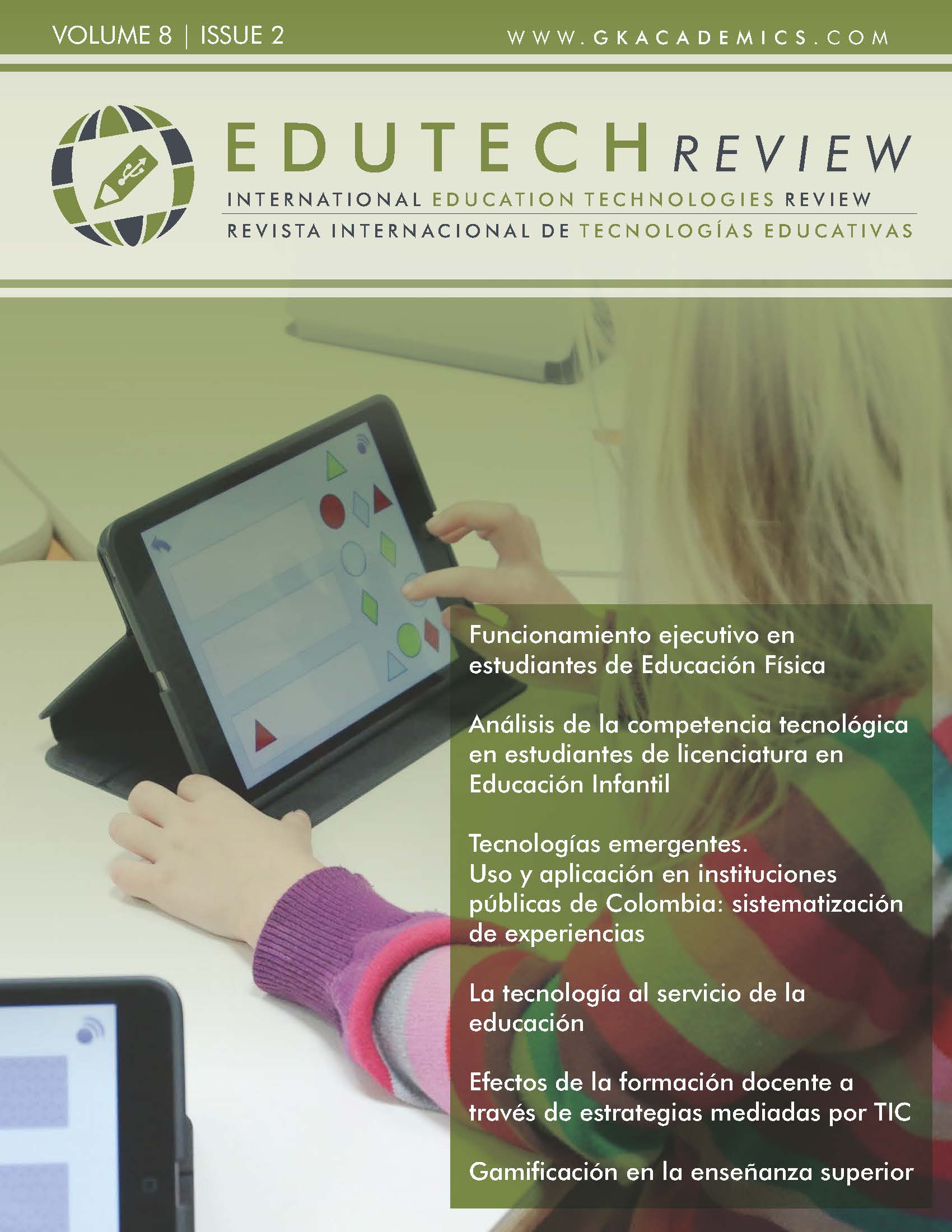Technology at the service of education
DOI:
https://doi.org/10.37467/gka-revedutech.v8.3013Keywords:
Educational technology, Teaching, Learning, AssessmentAbstract
In the field of education, the use of technology is more widespread, and prevalent now. This has challenged the institutions to develop strategies that allow the appropriation and the governance of digital media in the teaching, learning, and assessment process, in order to achieve significant attainment for the academic community in general. Hence, it is imperative to train the teachers and students in digital competencies to maintain quality in education and to meet the immersive virtuality space.
Global Statistics ℹ️
|
716
Views
|
301
Downloads
|
|
1017
Total
|
|
References
Barrón, M. (2020). La educación en línea. Tansiciones y disrupciones. En H. Casanova (Ed.), Educación y pandemia. Una visión académica. Instituto de Investigaciones sobre la Universidad y la Educación de la UNAM. México. https://www.iisue.unam.mx/investigacion/textos/educacion_pandemia.pdf
Begoña, G. (2020). La evolución del e-learning: del aula virtual a la red. RIED. Revista Iberoamericana de Educación a Distancia (2018), 21(2), 69-82. http://dx.doi.org/10.5944/ried.21.2.20577 DOI: https://doi.org/10.5944/ried.21.2.20577
Calderón, M. (2019). La planificación microcurricular: una herramienta para la innovación de las prácticas educativas. Rehuso, 4(2), 103-111. https://revistas.utm.edu.ec/index.php/Rehuso/article/view/1684 DOI: https://doi.org/10.33936/rehuso.v4i2.2900
Cardini, A. (2020). Escuela digital ¿qué nos deja la pandemia? En M. Barrero, M. Lara y N. Palacios (Coords), La escuela que viene. Reflexión para la acción (p.16). Madrid: Fundación Santillana.
Castilla, H. (2020). La educación superior en tiempos de transformación. Bogotá: UNIMINUTO. https://tinyurl.com/bib100587
Correa, L. (2020). Cómo orientar una clase remota… sin morir en el intento. Primera edición. Bogotá: Thinking Lab S.A.S.
Pila, J., Andagoya, W. y Fuertes, M. (2020). El profesorado: un factor clave en la innovación educativa. Revista EDUCARE - UPEL-IPB - Segunda Nueva Etapa 2.0, 24(2), 212–232. https://doi.org/10.46498/reduipb.v24i2.1327 DOI: https://doi.org/10.46498/reduipb.v24i2.1327
Salinas, J., De Benito, B., Pérez, A. y Gisbert, M. (2018). Blended learning, más allá de la clase presencial. RIED. Revista Iberoamericana de Educación a Distancia (2018), 21(1), pp. 195-213. http://dx.doi.org/10.5944/ried.21.1.18859 DOI: https://doi.org/10.5944/ried.21.1.18859
Sepúlveda, P. (2020). Educación en línea en cuarentena: ¿Cómo ser más que un docente que lee diapositivas y entusiasmar a los alumnos? En P. Neira, C. Rodríguez y J. Villanueva (Coords), Enseñanza de emergencia a distancia: textos para la discusión (p. 6). Perú: The Learning Factor.
Suárez, J., Jiménez, J. y Bonilla, J. (2017). Uso de escenarios de aprendizaje en entornos E-Learning y B-Learning como alternativa de estudio en la educación a distancia. Revista de Investigación, Formación y Desarrollo: Generando Productividad Institucional. https://dialnet.unirioja.es/servlet/articulo?codigo=7405688
UNIMINUTO. (2020). Guía de recursos digitales. Oficina de Asuntos Internacionales y Centro de Excelencia Docente. Bogotá: UNIMINUTO.
Downloads
Published
How to Cite
Issue
Section
License
Copyright (c) 2021 EDUTECH REVIEW. International Education Technologies Review

This work is licensed under a Creative Commons Attribution-NonCommercial-NoDerivatives 4.0 International License.
Those authors who publish in this journal accept the following terms:
- Authors will keep the moral right of the work and they will transfer the commercial rights.
- After 1 year from publication, the work shall thereafter be open access online on our website, but will retain copyright.
- In the event that the authors wish to assign an Creative Commons (CC) license, they may request it by writing to publishing@eagora.org







